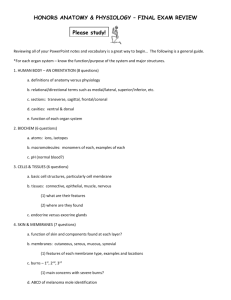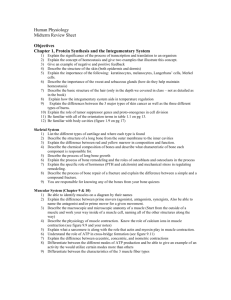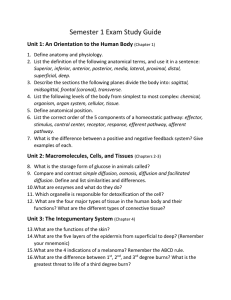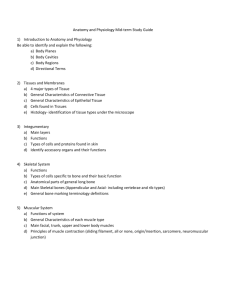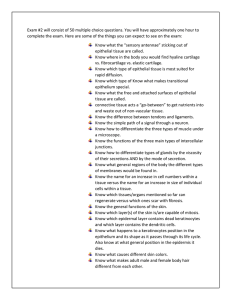PAP Bio: Chapter 35 &36 Review
advertisement
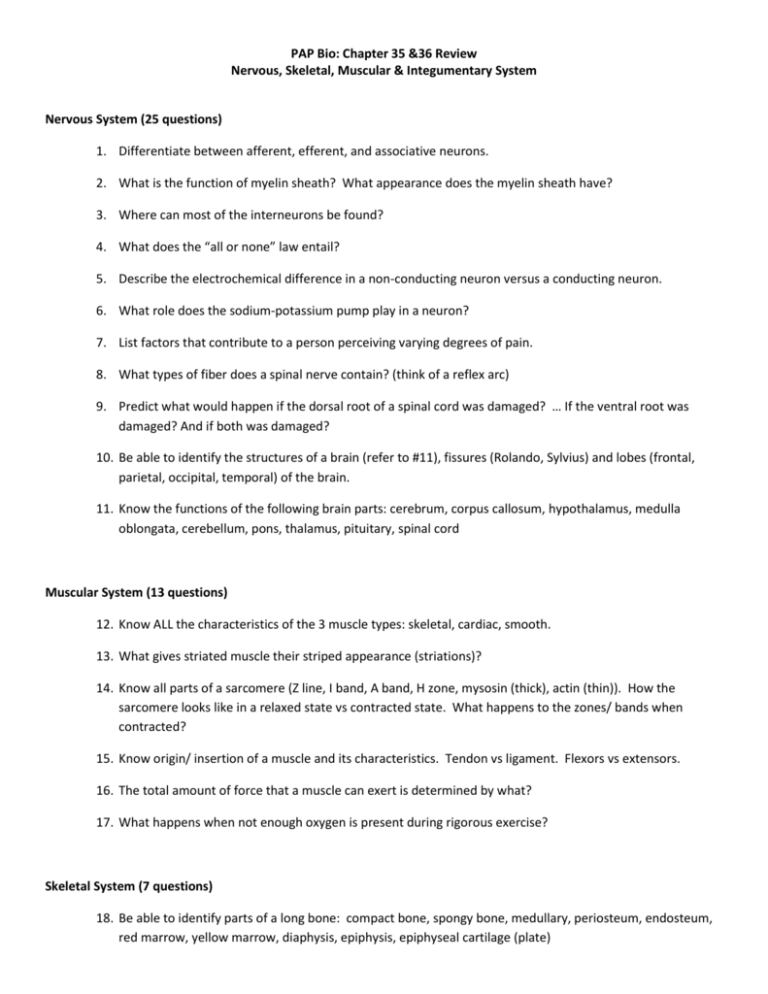
PAP Bio: Chapter 35 &36 Review Nervous, Skeletal, Muscular & Integumentary System Nervous System (25 questions) 1. Differentiate between afferent, efferent, and associative neurons. 2. What is the function of myelin sheath? What appearance does the myelin sheath have? 3. Where can most of the interneurons be found? 4. What does the “all or none” law entail? 5. Describe the electrochemical difference in a non-conducting neuron versus a conducting neuron. 6. What role does the sodium-potassium pump play in a neuron? 7. List factors that contribute to a person perceiving varying degrees of pain. 8. What types of fiber does a spinal nerve contain? (think of a reflex arc) 9. Predict what would happen if the dorsal root of a spinal cord was damaged? … If the ventral root was damaged? And if both was damaged? 10. Be able to identify the structures of a brain (refer to #11), fissures (Rolando, Sylvius) and lobes (frontal, parietal, occipital, temporal) of the brain. 11. Know the functions of the following brain parts: cerebrum, corpus callosum, hypothalamus, medulla oblongata, cerebellum, pons, thalamus, pituitary, spinal cord Muscular System (13 questions) 12. Know ALL the characteristics of the 3 muscle types: skeletal, cardiac, smooth. 13. What gives striated muscle their striped appearance (striations)? 14. Know all parts of a sarcomere (Z line, I band, A band, H zone, mysosin (thick), actin (thin)). How the sarcomere looks like in a relaxed state vs contracted state. What happens to the zones/ bands when contracted? 15. Know origin/ insertion of a muscle and its characteristics. Tendon vs ligament. Flexors vs extensors. 16. The total amount of force that a muscle can exert is determined by what? 17. What happens when not enough oxygen is present during rigorous exercise? Skeletal System (7 questions) 18. Be able to identify parts of a long bone: compact bone, spongy bone, medullary, periosteum, endosteum, red marrow, yellow marrow, diaphysis, epiphysis, epiphyseal cartilage (plate) 19. Be able to identify parts of an osteon/ Haversian system: canaliculi, Haversion canal, lacuna, lamella, osteocyte Integumentary System (5 questions) 20. List the functions of the skin. 21. What does the dermis consist of? 22. Cells of this layer produce hair and nails? 23. What might overexposure of the sun cause? 24. List ways to reduce one’s risk of skin cancer. *** BONUS POINT OPPORTUNITY ON THE EXAM (+10 POINTS!!!) ID the bones of the human body (including the vertebrae, facial, and cranium bones).


